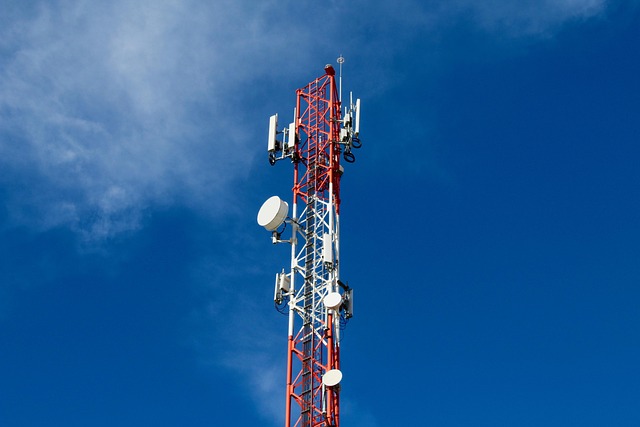Vehicle-to-Vehicle (V2V) communication is a cutting-edge technology using DSRC for real-time data exchange between cars, enhancing safety by warning about hazards. Public-private partnerships are leveraging V2V to optimize traffic flow, reduce congestion, and improve urban mobility. Select Vehicle-to-Vehicle Communication leads these advancements, integrating into smart city infrastructure. While interoperability, privacy, and public trust pose challenges, V2V promises a safer, more connected, efficient transportation network shaped by smarter cities and 5G networks.
“Experience seamless driving with the revolutionary power of Vehicle-to-Vehicle (V2V) communication technology. This cutting-edge innovation promises to transform daily commutes, prioritizing safety and efficiency. Learn how V2V tech enables vehicles to ‘talk’ to each other, sharing vital data to prevent accidents and ease traffic flow. Explore its benefits, from enhanced road safety to improved driving experiences, and discover the challenges hindering widespread adoption. Finally, glimpse into the future where V2V integration becomes a seamless part of our transportation landscape.”
- Understanding Vehicle-to-Vehicle Communication (V2V) Technology
- Benefits of V2V Tech in Enhancing Road Safety
- How V2V Communication Facilitates Seamless Driving Experiences
- Challenges and Considerations for Widespread V2V Adoption
- The Future of Transportation: Integrating V2V Tech into Everyday Commutes
Understanding Vehicle-to-Vehicle Communication (V2V) Technology

Vehicle-to-Vehicle (V2V) Communication is a groundbreaking technology that enables direct communication between cars, enhancing road safety and improving overall driving experiences. This innovative system allows vehicles to exchange data in real-time, creating a network of connected cars on the road. By utilizing dedicated short-range communication (DSRC) technologies, such as Wi-Fi or cellular networks, V2V systems can detect and communicate with nearby vehicles, sharing vital information like position, speed, and brake status.
The key to V2V technology lies in its ability to facilitate safe vehicle interactions through real-time data sharing. This includes receiving instant warnings about potential hazards, such as abrupt stops or lane changes by other cars, allowing drivers to take necessary actions promptly. Moreover, public-private partnerships in transport urban planning and V2V communication can play a pivotal role in optimizing traffic flow, reducing congestion, and enhancing overall transportation efficiency.
Benefits of V2V Tech in Enhancing Road Safety

Vehicle-to-Vehicle (V2V) communication technology is revolutionizing road safety by enabling direct vehicle-to-vehicle interactions, enhancing visibility and reducing potential hazards on the road. This smart cities application leverages advanced networking capabilities to transmit real-time data between vehicles, providing crucial information about speed, position, and sudden stops. By integrating V2V tech, cars can effectively communicate with one another, creating a more interconnected and responsive transport network.
The market trends in automotive networking highlight the growing importance of such innovations, as public-private partnerships in transport urban planning actively explore ways to integrate V2V into existing infrastructure. This collaborative approach not only improves road safety but also contributes to efficient traffic flow, reducing congestion and enhancing overall mobility in smart cities.
How V2V Communication Facilitates Seamless Driving Experiences

Vehicle-to-Vehicle (V2V) communication is revolutionizing driving experiences by enabling direct and instant information exchange between vehicles. This technology facilitates seamless driving through various intelligent transportation systems (ITS) applications, enhancing safety and efficiency on the roads. By utilizing V2V tech, cars can share real-time data like their position, speed, and intended direction with neighboring vehicles within a certain range.
This enables drivers to anticipate potential hazards, such as sudden stops or lane changes, allowing them to respond accordingly. Moreover, smart cities applications can leverage V2V communication to optimize traffic flow, reduce congestion, and improve overall urban mobility. The emerging transport technologies associated with V2V communication promise to create a safer, more connected, and efficient transportation ecosystem.
Challenges and Considerations for Widespread V2V Adoption

The widespread adoption of Vehicle-to-Vehicle (V2V) communication technology holds immense promise for transforming driving experiences and enhancing road safety. However, several challenges must be addressed to fully realize its potential. One significant hurdle is ensuring interoperability between different vehicle systems and communication protocols, as various manufacturers may employ diverse car-to-car communication standards. Standardization is crucial to enable seamless V2V interactions across a diverse fleet, preventing potential compatibility issues that could hinder widespread deployment.
Another consideration pertains to data privacy and security. As V2V tech relies on the exchange of real-time vehicle data, establishing robust security measures to protect against cyberattacks and unauthorized access is paramount. Additionally, gaining public trust in this emerging transport technology is essential for successful implementation. Effective communication about the benefits of V2V, including its role in congestion reduction strategies and improved road safety, can help alleviate concerns and foster widespread acceptance of these innovative transportation solutions.
The Future of Transportation: Integrating V2V Tech into Everyday Commutes

The future of transportation lies in seamless integration of technology, and Vehicle-to-Vehicle (V2V) communication is at the forefront of this revolution. As we move towards smarter cities and more sustainable mobility solutions, V2V tech promises to transform everyday commutes. This advanced system enables vehicles to communicate with each other, sharing real-time data about their positions, speeds, and even intended routes. Such roadside communication systems can significantly enhance road safety by providing drivers with instant alerts about potential hazards or traffic congestion.
The market trends in automotive networking suggest that V2V technology is not just a concept but an emerging reality. With the rise of connected cars and 5G networks, we are witnessing a rapid development in this field. This innovative approach to transportation not only improves road safety but also contributes to energy-efficient transportation by optimizing traffic flow and reducing unnecessary delays. Through these integrated systems, drivers can make more informed decisions, leading to smoother journeys and potentially lower fuel consumption.
Vehicle-to-Vehicle (V2V) communication technology has the potential to revolutionize driving experiences by enhancing road safety and enabling seamless connectivity on the roads. As this technology matures, we can expect to see a future where vehicles communicate with each other and their environment, creating a safer and more efficient transportation network. Despite current challenges related to standardization and privacy concerns, the benefits of V2V tech make it an essential step towards smarter cities and smoother commutes. Embracing this game-changing technology will require collaboration between automakers, regulators, and infrastructure providers, but the rewards—from improved safety to reduced congestion—are indelible.
